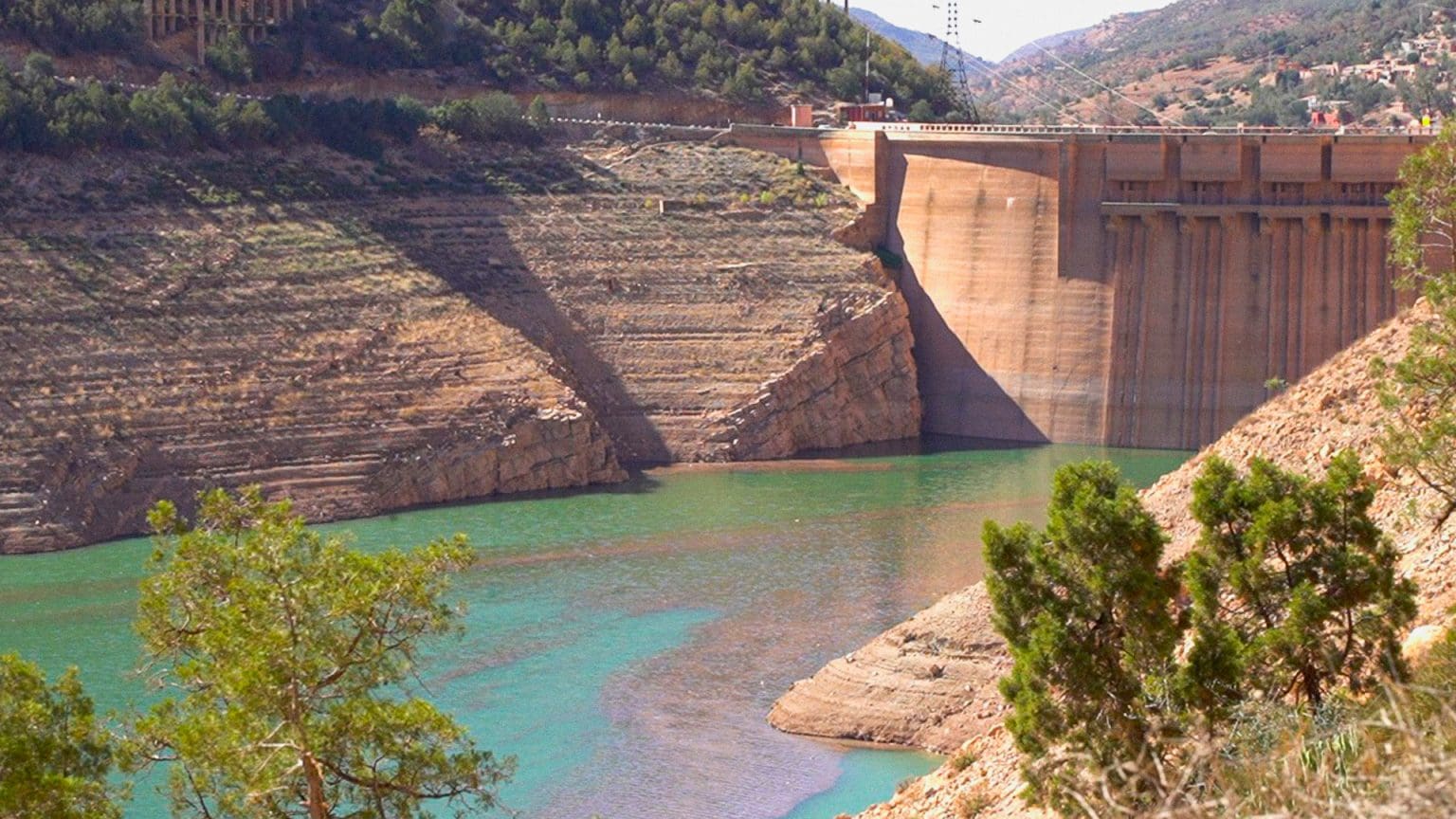Situated about 100 kilometers from Morocco’s southern city, Zagora, the Agdez dam, is expected to alleviate the region’s acute water shortage and address increasing water demand, Morocco’s News Agency (MAP) reported Monday.
The Agdez Dam began operations in April 2023, spanning 940 hectares and standing 130 meters high, bolsters the hydraulic infrastructure of the Zagora province and the broader Draa-Tafilalet region.
The dam is designed to guarantee a dependable water supply, stimulate economic growth through agriculture and hydroelectric power, and facilitate sustainable development in alignment with the royal vision.
The facility cost 1.2 billion MAD to build and has a storage capacity of 247 million cubic meters. It is designed to supply potable water, support irrigation, protect against flooding, and generate electricity, according to Mohamed Ajlali, the dam’s manager from the Draa-Oued Noun Hydraulic Basin.
The current water reserve is 31 million cubic meters, with a filling rate of 12.97%.
The project, according to Ajlali, is expected to create jobs, prevent the rural exodus of skilled workers, and enhance regional connectivity with the construction of a new 17-kilometer road linking National Road number nine to the dam.
“The facility will also enhance accessibility to tourist attractions such as the Tizgui waterfalls,” he added.
The dam provides vital support to Zagora through the water treatment station constructed by the National Office of Water and Electricity (ONEE) within the framework of the National Program for Drinking Water and Irrigation (PNAEPI) 2020-2027.
ONEE’s provincial director Khalid Abdellatif Zyat told MAP that “the station commenced operations in December 2023 with a capacity of 250 L/S, supplying water to Zagora, Agdez, and Tamgrout.”
He added that the first phase of the station with “a budget of 730 million MAD, provides services to over 72,000 residents.”
Several Zagora province locals have voiced their satisfaction with the Agdez Dam’s operations, citing its beneficial impact in reviving oases.
“The dam is of vital importance to the people of the province,” Mohamed Doudou, an agriculturalist from the Mezguita commune, stated. He highlighted its impact on agricultural activities, the preservation of the water table, and the mobilization of sufficient quantities of drinking water.
After six years of consecutive drought, water reserves have been significantly impacted, with national reservoir levels currently at 28% and unevenly distributed.
Additional projects will be scheduled to address the critical water situation as part of the ongoing implementation of the National Program, following the Royal Speech on Throne Day when the monarch urged the public and officials to effectively manage and conserve water resources.
Various stakeholders called for a multi-faceted strategy to address water scarcity, prioritizing improved water use management, increased monitoring of illegal water use, and the implementation of emergency water conservation measures.
The station’s capacity is set to be expanded to 375 liters per second by 2040. Subsequent phases will provide water to additional communes in the Zagora province, including Ait Oualal, Nkob, Tazarine, Fezouata, Ktaoua, Tagounite, Mhamid El Ghizlane, Afelandrea, Tansift, Afra, Mezguita, Tamzmoute, Ouled Yahya Lagurayre, and Bouzaroual, according to Zyat.


